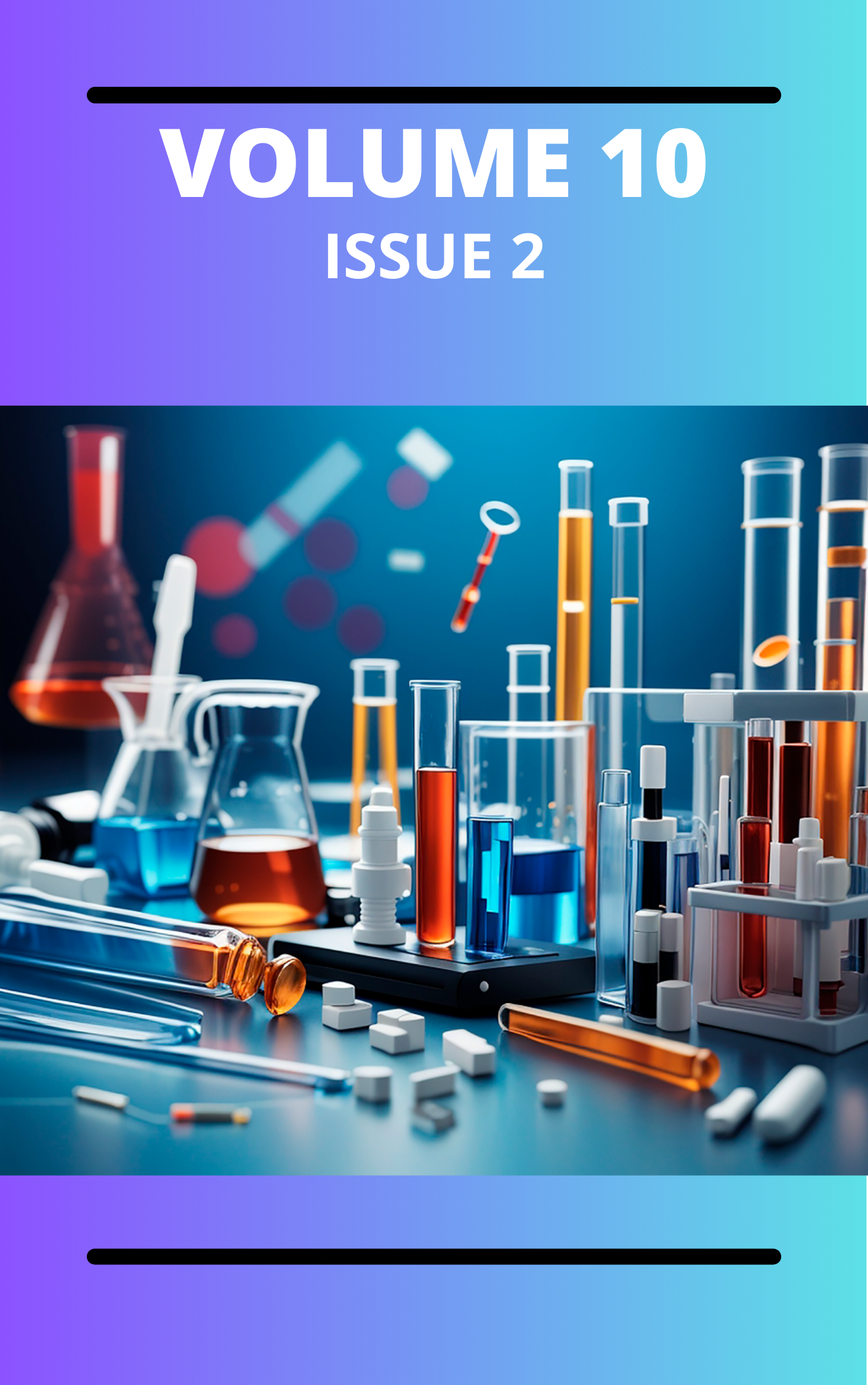Investigation of the Inhibitive Properties of Bio-Inspired Starch-Polyvinyl Acetate Graft Copolymer (Ps-Pvagc) on the Acid Corrosion of Mild Steel
Keywords:
Biopolymer, inhibition efficiency, corrosion rate, graft copolymerAbstract
Anticorrosive properties of potato and corn starch, potato starch-polyvinyl acetate graft copolymer (PS-PVAGC) and modified biopolymer. PS-PVAGC was prepared by grafting potato starch into PVA using a crosslinking agent. The modified biopolymer was synthesized by blending starch with NaOH and borax. The weight loss method was used to test the inhibitors on mild steel in 1.0 M HCl at room temperature, the observed changes in functional groups of the inhibitors during the entire experiment were monitored using the FTIR method. The results obtained showed that within 2 hours and a concentration of 4 g of the inhibitor, corn starch produced a very low inhibitor efficiency (IE) of 38.52%, while potato starch yielded a maximum IE of 79.81%. The modified biopolymer performed better with a maximum IE of 87.90% while PS-PVAGC performed best with a maximum IE of 92.5%. The inhibitors all reduced the corrosion rates as their concentrations were increased; however, the poor performance of pure starch can be attributed to its poor solubility in the acid solution and poor adhesive power on the metal surface. All formulations showed OH broad peaks (between 3446cm-1-3287 cm-1) as the major group offering heteroatom (i.e oxygen) for the adsorption of the inhibitor and subsequent suppression of the corrosion of the metal.
Downloads
Published
Issue
Section
Similar Articles
- Iniofon Udom, Grace Cookery, Paul Ocheje Ameh, Investigation of Acanthus montanus Leaves Extract as Corrosion Inhibitor for Copper in 2 M Sulphuric Acid , Communication In Physical Sciences: Vol. 12 No. 3 (2025): VOLUME 12 ISSUE 3
- Humphrey Sam Samuel, Nonelectrochemical Techniques in corrosion inhibition studies: Analytical techniques , Communication In Physical Sciences: Vol. 9 No. 3 (2023): VOLUME 9 ISSUE 3
- F. E. Awe, Adsorptive studies of the inhibitive properties of ethanolic extracts of Parinari polyandra on Mild steel in acidic media , Communication In Physical Sciences: Vol. 4 No. 1 (2019): VOLUME 4 ISSUE 1
- Naziru Imam, Isreal I. Omoniyi, Paul Ameh, Study of the Functional Groups Associated with the Corrosion Inhibition of Stainless Steel Arch Bar in Acidic Medium by Khaya Grandifolia Gum Exudate , Communication In Physical Sciences: Vol. 7 No. 4 (2021): VOLUME 7 ISSUE 4
- Okoche Kelvin Amadi, Stella Mbanyeaku Ufearoh, Innocent Ajah Okoro, Paulina Adaeze Ibezim, Mitigation of the Corrosion of Mild Steel in Acidic Solutions Using An Aqueous Extract of Calopogonium muconoide (cm) as a green corrosion inhibitor , Communication In Physical Sciences: Vol. 8 No. 3 (2022): VOLUME 8 ISSUE 3
- P. O. Ameh, N. O. Eddy, Theoretical and Experimental Investigations of the Corrosion Inhibition Action of Piliostigma Thonningii Extract on Mild Steel in Acidic Medium , Communication In Physical Sciences: Vol. 3 No. 1 (2018): VOLUME 3 ISSUE 1
- Patricia Ese Umoru, Femi Emmanuel Awe, Joseph Ifeanyi Uche, Oluwayemi Abiodun Babatunde, Ibrahim Aliyu Salaha, Investigation of the Adsorptive And Inhibitive Properties Of Cucurbita Maxima Peel Extract And Halide Ions As Inhibitors For Stainless Steel in 1m H2so4 Solution , Communication In Physical Sciences: Vol. 10 No. 2 (2023): VOLUME 10 ISSUE 2
- Richard Alexis Ukpe, Joint effect of halides and Ethanol Extract of Sorghum on the Inhibition of the Corrosion of Aluminum in HCl , Communication In Physical Sciences: Vol. 4 No. 2 (2019): VOLUME 4 ISSUE 2
- Babatunde T. Ogunyemi, Richard A. Ukpe, Quantum Molecular Parameters for the Prediction of Corrosion Inhibition potentials of some Alkaloids in Cryptocarya nigra Stem , Communication In Physical Sciences: Vol. 8 No. 4 (2022): VOLUME 8 ISSUE 4
- Nkem B. Iroha, Richard A. Ukpe, Investigation of the Inhibition of the Corrosion of carbon steel in Solution of HCl by Glimepiride , Communication In Physical Sciences: Vol. 5 No. 3 (2020): VOLUME 5 ISSUE 3
You may also start an advanced similarity search for this article.




